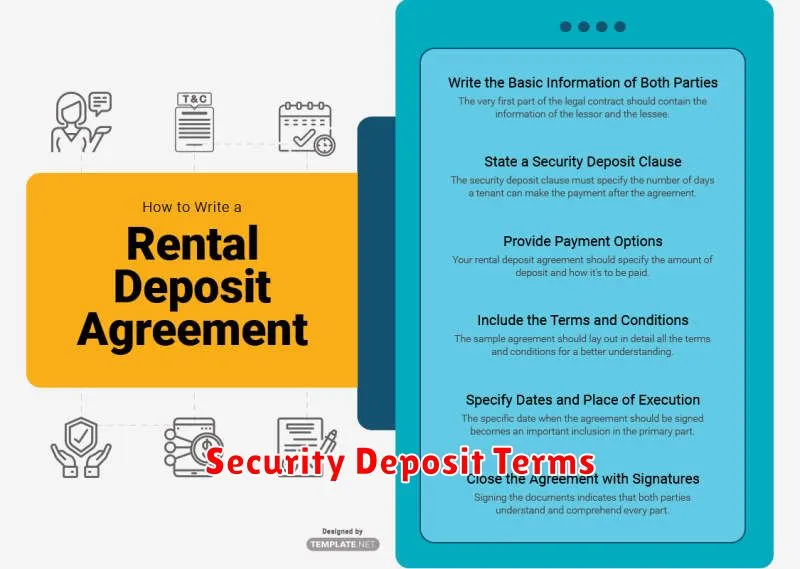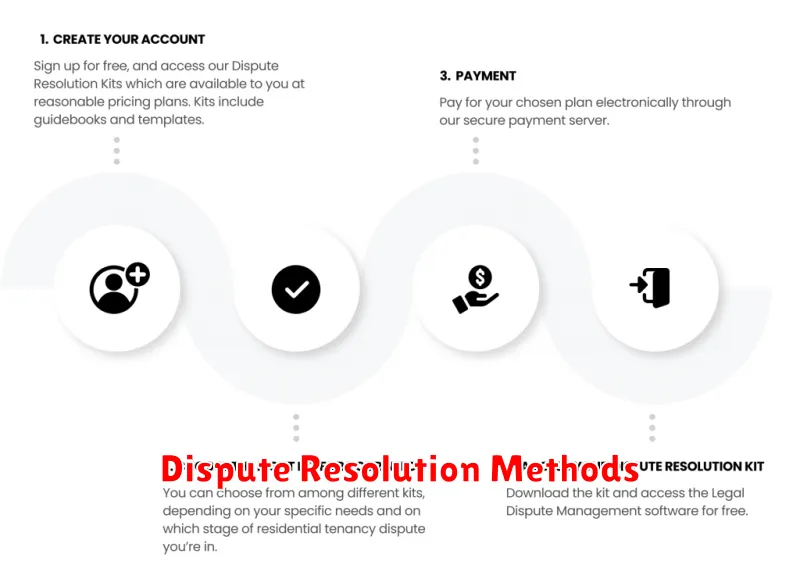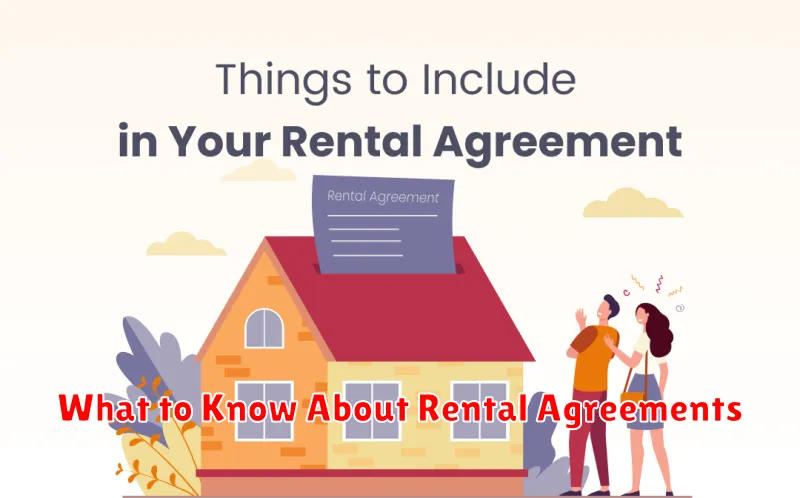Entering into a rental agreement is a significant step, whether you are a landlord or a tenant. A well-drafted lease agreement protects the rights and responsibilities of both parties, outlining the terms of the tenancy, including the rent amount, lease term, and security deposit. Understanding the intricacies of rental agreements is crucial to avoid potential disputes and ensure a smooth rental experience. This article will delve into the essential aspects of rental agreements, providing valuable information for both landlords and tenants. From the importance of a written lease to understanding your rights and obligations, we’ll cover what you need to know before signing on the dotted line. Learn how to navigate the complexities of rental agreements and establish a positive landlord-tenant relationship.
Navigating the world of rental agreements can be challenging. Whether you’re searching for the perfect apartment or managing a property, understanding the nuances of a lease is essential. This comprehensive guide will provide you with the knowledge you need to confidently enter into a rental agreement. We will explore key clauses typically found in rental agreements, including provisions related to maintenance, pet policies, and lease termination. By familiarizing yourself with these key elements, you can protect your interests and ensure a successful tenancy. From understanding the implications of a month-to-month rental agreement to deciphering the legalities of a fixed-term lease, this article will empower you to make informed decisions throughout your rental journey. Gain a clear understanding of rental agreements and embark on your rental experience with confidence.
What Is a Rental Agreement?
A rental agreement, also known as a lease, is a legally binding contract between a landlord and a tenant. It outlines the terms and conditions of renting a property, such as an apartment, house, or commercial space. This agreement protects both the landlord and the tenant by clearly stating their rights and responsibilities.
A rental agreement typically covers the duration of the tenancy, the amount of rent, the payment schedule, and the responsibilities for maintenance and repairs. It also addresses other crucial aspects like the security deposit, pet policies, and the process for terminating the agreement.
Key Clauses to Look For
Rental agreements are legally binding contracts, so it’s crucial to understand the key clauses before signing. Pay close attention to the following:
Lease Term: This defines the length of the rental agreement, whether it’s a fixed-term or month-to-month lease. Knowing the term helps you plan accordingly.
Rent Amount & Payment: This outlines the monthly rent and accepted payment methods. Clarity on these details prevents future disputes.
Security Deposit: Understand the amount, terms for return, and permissible deductions. This protects your financial interests.
Maintenance Responsibilities: Clearly establishes who is responsible for repairs and property upkeep – landlord or tenant.
Fixed-Term vs. Month-to-Month Leases
A fixed-term lease specifies a set period, such as six months or a year, during which the agreement is in effect. After the term expires, the lease can be renewed, converted to a month-to-month agreement, or terminated. Fixed-term leases provide stability for both landlord and tenant.
Month-to-month leases offer more flexibility. They automatically renew each month until either party provides proper notice of termination. While convenient for shorter stays or uncertain situations, they offer less predictability regarding rent increases and long-term occupancy.
Security Deposit Terms

A security deposit protects the landlord against potential damages or unpaid rent. Lease agreements outline the terms regarding the security deposit.
Key aspects often covered include the amount of the deposit, which is usually limited by state law, how it’s held (e.g., in a separate interest-bearing account), and the conditions under which it can be withheld (e.g., unpaid rent, damage beyond normal wear and tear).
The agreement should also specify the timeline for returning the deposit after the lease ends, along with an itemized list of deductions if any are made.
Renewal and Termination Policies
Lease renewals and terminations are governed by the terms outlined in your rental agreement. It’s crucial to understand these clauses to avoid potential disputes. Some agreements automatically renew on a month-to-month basis unless otherwise specified. Others require formal renewal processes.
Termination clauses typically stipulate the required notice period, often 30 or 60 days. Breaking a lease prematurely can have significant financial consequences, including penalties and legal action. Familiarize yourself with the specific conditions under which you or your landlord can terminate the agreement.
Responsibilities of Landlord and Tenant
A rental agreement outlines the responsibilities of both the landlord and the tenant. Understanding these obligations is crucial for a successful tenancy.
Landlord Responsibilities
Landlords are typically responsible for providing a habitable dwelling. This includes ensuring functioning plumbing, heating, and electrical systems. They are also often responsible for necessary repairs and maintaining common areas.
Tenant Responsibilities
Tenants are responsible for paying rent on time and maintaining the cleanliness of the property. They must also adhere to the terms of the lease, such as restrictions on pets or alterations to the property. Respecting the peace and quiet of other tenants is also a common responsibility.
Subletting Clauses
Subletting clauses outline the rules regarding a tenant’s ability to lease the property to another individual. These clauses typically require the landlord’s written consent before subletting is permitted. The lease may stipulate specific conditions or procedures for obtaining this consent. Some agreements may prohibit subletting entirely.
It’s crucial to understand these stipulations to avoid breaching the lease agreement. Unauthorized subletting can lead to penalties, including lease termination.
Rent Payment Rules
Rent payment rules are a critical aspect of any rental agreement. These rules typically outline the amount of rent due, the due date, and the accepted payment methods. The agreement should clearly state the monthly rent amount and the specific day it is due. Late payment penalties should also be clearly defined.
Acceptable payment methods should be specified within the agreement. This might include checks, online transfers, or money orders. Ensure the agreement specifies where rent should be paid, whether it be a physical address, a drop-box, or an online portal.
Late Fee Policies
Late fees are a common component of rental agreements. They are designed to incentivize timely rent payments. Understanding your lease’s late fee policy is crucial to avoid unexpected charges.
Policies vary widely. Some landlords implement a grace period, while others charge a fee immediately after the due date. The fee itself can be a flat fee or a percentage of the rent. Some agreements also stipulate increasing fees for each subsequent day the rent is late.
Always carefully review the late fee policy outlined in your lease before signing. If anything is unclear, discuss it with your landlord to ensure a clear understanding of the potential financial repercussions of late rent payments.
Dispute Resolution Methods

Disagreements between landlords and tenants are unfortunately common. Effective dispute resolution is crucial for preserving a positive landlord-tenant relationship and avoiding costly legal battles. Several methods can be employed to resolve disputes, ranging from informal discussions to formal legal proceedings.
Negotiation and Mediation: Open communication is key. Tenants and landlords should first attempt to resolve issues through direct negotiation. If direct discussion fails, mediation, facilitated by a neutral third party, can help find mutually agreeable solutions.
Arbitration: A more formal process, arbitration involves a neutral arbitrator who hears evidence and makes a binding decision. This can be a quicker and less expensive alternative to court.
Litigation: As a last resort, disputes can be resolved through the court system. This option can be expensive and time-consuming, but may be necessary for complex or intractable disagreements.

